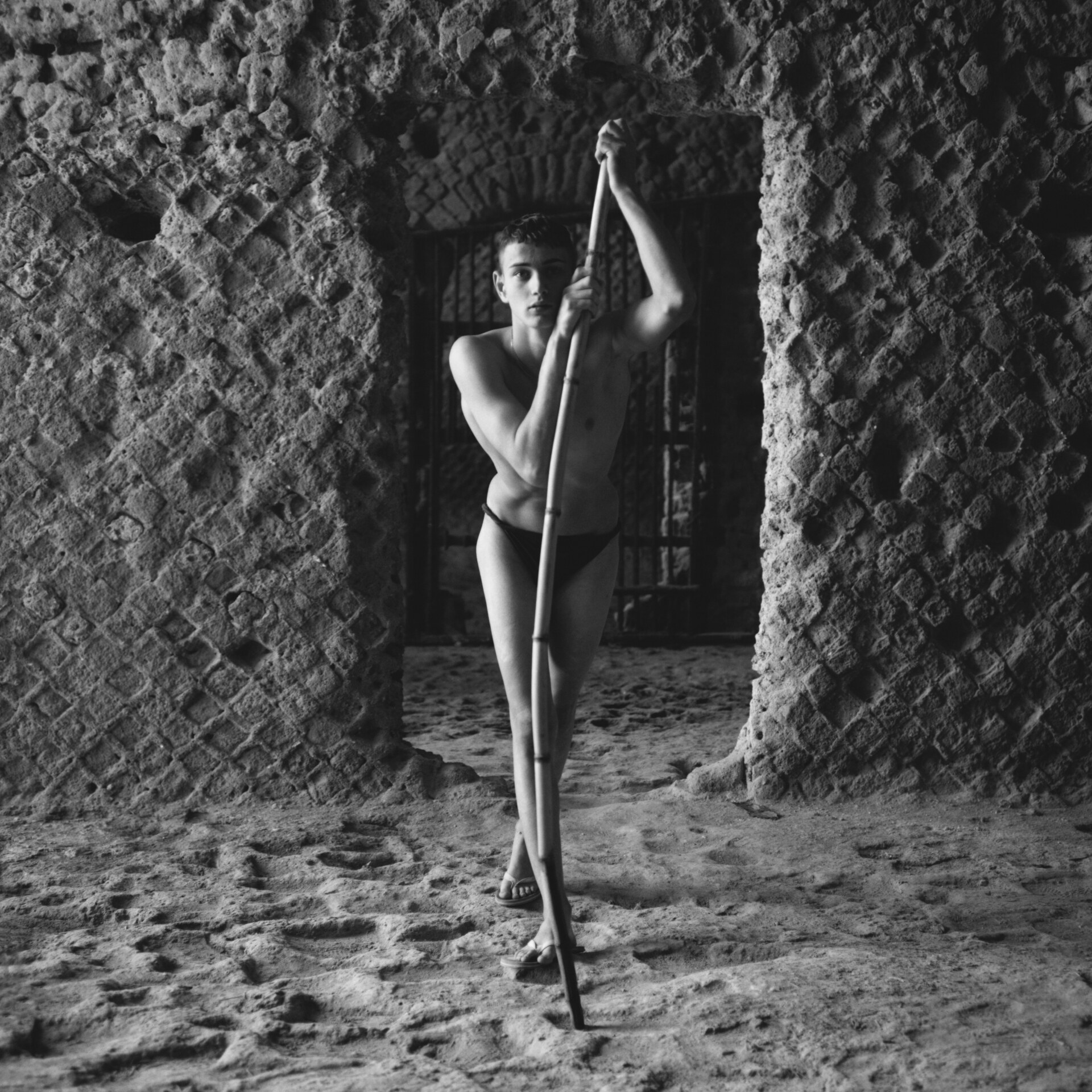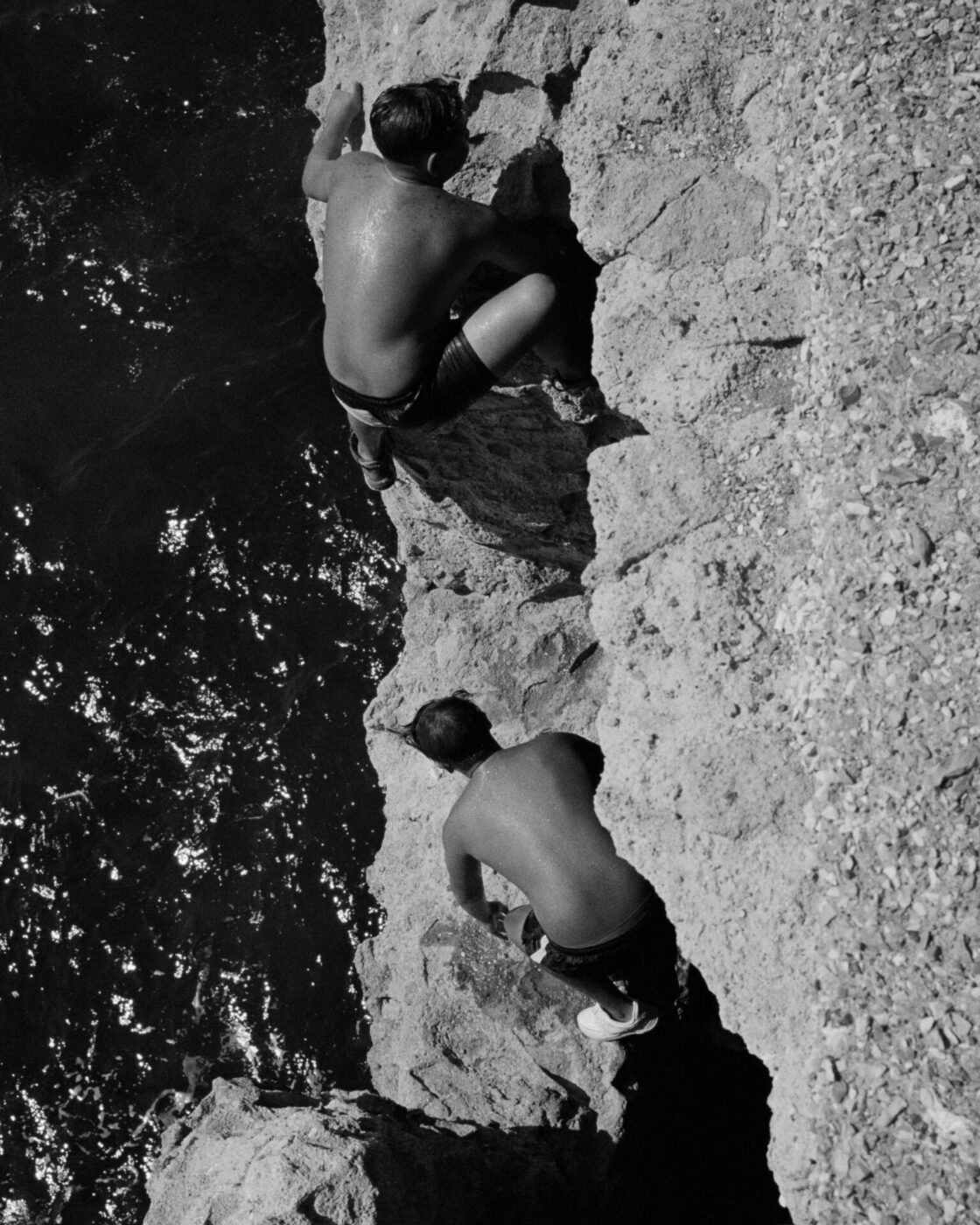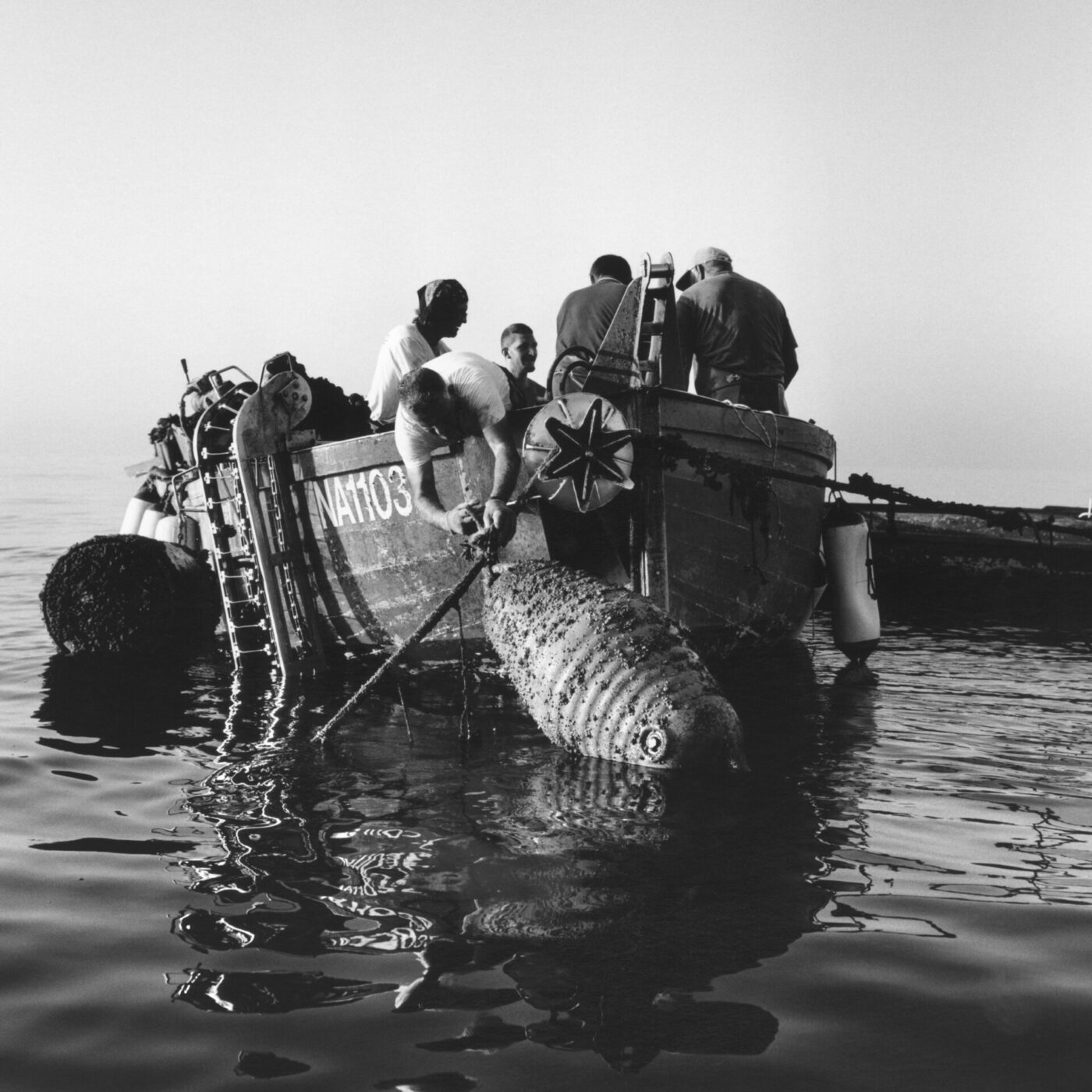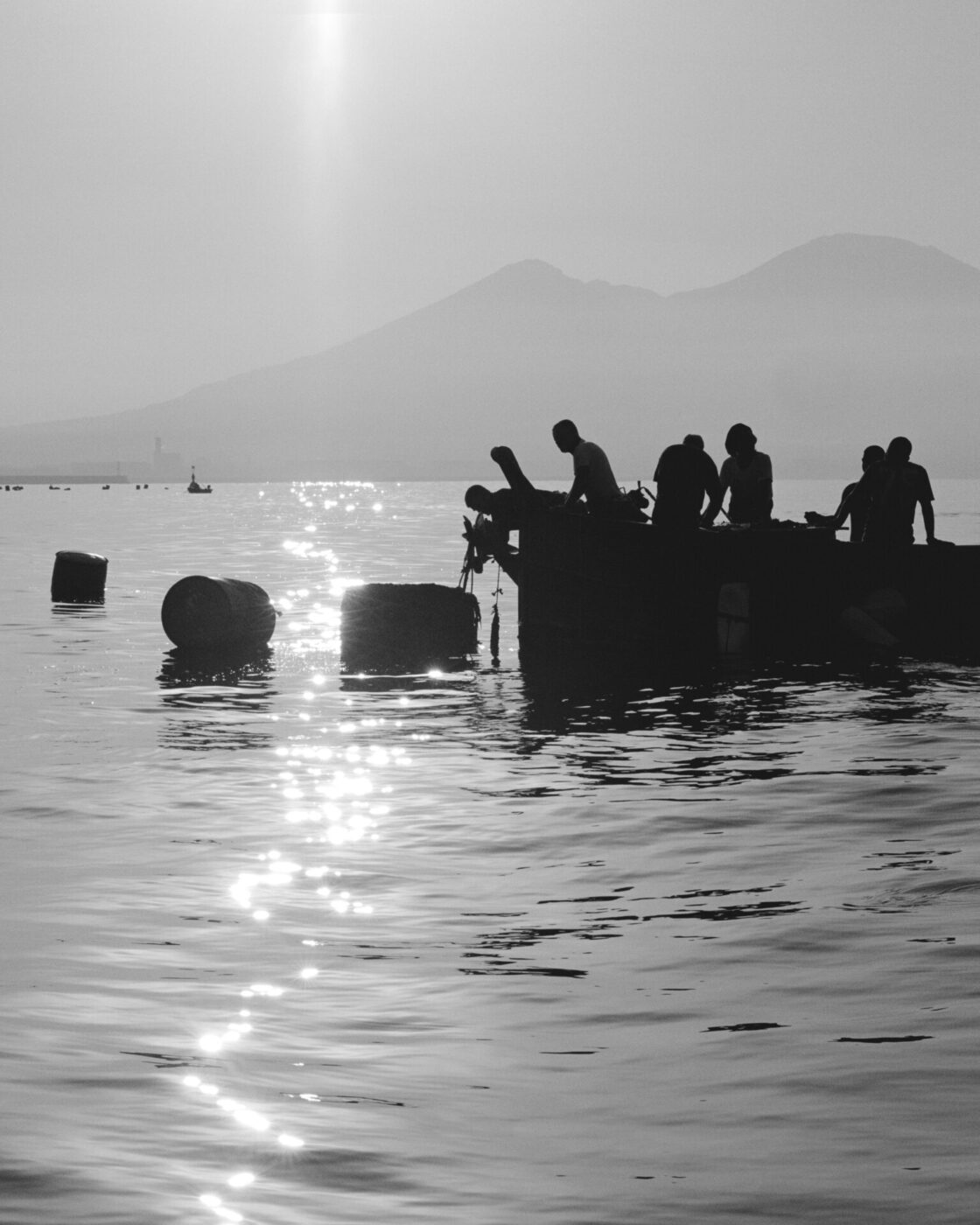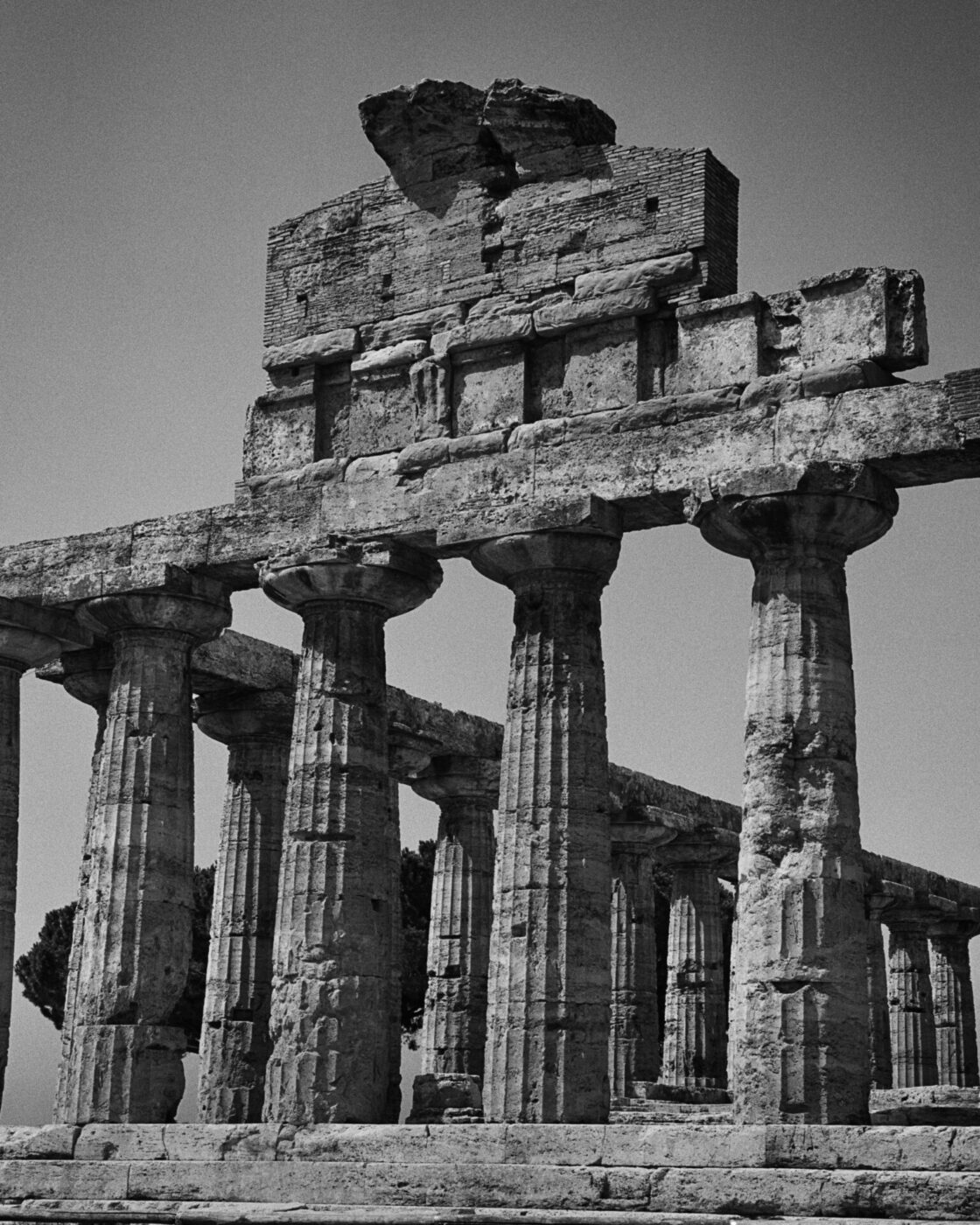Photographer Brett Lloyd loves Naples, jesce pazzo pe Napoli (goes crazy for Naples). In fact, he loves Naples so much he repeated its name three times in the title of his new book NAPOLI NAPOLI NAPOLI. Shot over Lloyd’s last five summers in the city–times in which he was not a “photographer”, but rather a participant in everyday life with a camera in hand–this series of black and white images pulls at the heartstrings, going deeper than the city’s graffiti and broken glass. Lloyd’s Naples is passionate and poignant; he captures the city’s mystical allure through the faces of its people and the splendour of its geography. It’s a Naples of anema e core (soul and heart), a place that infatuates visitors on their first summer there, and even more so on their twenty-first. But the question must be asked: can someone who is not from Naples–a “visitor” like Lloyd, or me, or possibly you–ever truly understand the intrinsic essence of this city, its people, its rituals and superstitions, its deep complexities?
“I don’t think I want to understand. I’m very happy being intensely curious every time I go there. I’m certainly never going to understand what Neapolitans are yelling and screaming about all the time. I’ll also never truly understand Naples because I’ve never grown up by the sea, and I think that’s a huge part of the Neapolitan mentality,” says Lloyd at the Milan launch of his book. Wearing jeans and sneakers, there is a calmness about Lloyd and a generosity of spirit that makes you feel as though he has known you for years.
It’s therefore understandable that the twelve summers Lloyd has spent in Naples have seen subjects become friends and friends become subjects. The relationships he has forged with Neapolitan locals has ignited his curiosity about the city and ensured that his documentation of daily life is ultimately authentic. Raw, spontaneous and often fortuitous–lucky Lloyd’s camera wasn’t too far away to catch a couple of skinny scugnizzi leaping across a rock cavern at Marechiaro…Mamma Mia d’o Carmene!–the moments he captures evoke a profound synergy between people and place. As we observe in the book, this synergy seems to be the most powerful by the water.




Framed around a typical day in Naples from sunrise to sunset, Lloyd’s book starts at 5am with the crab fishers, who stand in the water like solemn statues waiting to spot a claw. Then come the “cheeky” old men at Santa Lucia who can barely tolerate the morning sun, cackling, making jokes at each other’s expense and paddling around in the water together while probably singing Roberto Murolo in full voice. Pretty soon it’s midday, time for the children and the mothers to descend on Castel dell’Ovo with raucous shouting and splashing. They are followed by the vital-bodied teenagers and young adults who will stay out for the rest of the day, eventually melting into what Lloyd perceives as a deeply reflective state by late afternoon. He also observes a series of other fleeting and profound moments throughout a day by the water: lovers sunbathing on a rock, a brooding and handsome young man named Claudio with salt-stiffened hair curled up like devil’s horns, a muscular trio locked in a heated argument instead of cooling off in the water, accusatory fingers flying everywhere. Lloyd’s lens doesn’t ask how or why: it simply shows what is, capturing the city’s striking contrasts that are inherent in its complexity. Young and old, calm and chaos, pleasure and pain, life and death.
“Almost all the people I have photographed are my friends or have become my friends after we met through the portraits. I’ve never had anyone say no to their photo being taken over the 12 years I have been going to Naples,” says Lloyd. Quite the opposite in fact, because if Lloyd takes Francesco’s photo, Francesco grabs his son Giulio to be in the shot too, who grabs his brother Vincenzo, who grabs his daughter Sofia…all while Lloyd is trying to shoot an analogue frame and spontaneously direct people in his basic knowledge of Neapolitan dialect. Respect is a universal language, and the mutual bonds Lloyd has developed with his subjects and friends creates a sense of trust, which, in turn, means creative freedom with the camera. He points to a portrait of a glistening-faced adolescent, who stares down the barrel of the camera with a mixed look of defiance and trepidation. The image represents the scope of Lloyd’s relationships with Neapolitan youth, who he offers a valuable chance for personal expression in front of the camera, in the comfort of their natural environment. “Pasquale is my muse. I have shot him for five years. In this image we painted his face, and people aren’t quite sure why his skin looks like that. They think maybe it’s a mixture of water and sunscreen. He speaks not a word of English and we very rarely have any conversation, but when we collaborate he brings me so much,” Lloyd says.
For a visitor, “understanding” Naples also means appreciating the extent to which its geography is ingrained in the mindset and behaviours of its people. Vesuvius, which Lloyd refers to as “a lover and a constant reminder of harsh fate” in his book, is an omnipotent presence that stirs something, stirs everything, in Neapolitans of every age. Physically, it’s a reminder to live every day as though it were the last–to enjoy an extra drink, to buy a new watch, to kiss the girl. Life is short; we could all die tomorrow. But there is also a deep spiritual connection Neapolitans have to Vesuvius that can be attributed to their explosive passion. As Lloyd muses: “Living with that volcano, seeing it every day, feeling its magnetic lines and pulls, and knowing that you’re so close to something so powerful, so explosive, definitely stimulates the mindset and behaviour of Neapolitans.” Indeed, there seems to be three gods in Naples; God – Dio, God – Maradona, and God – Vesuvius.
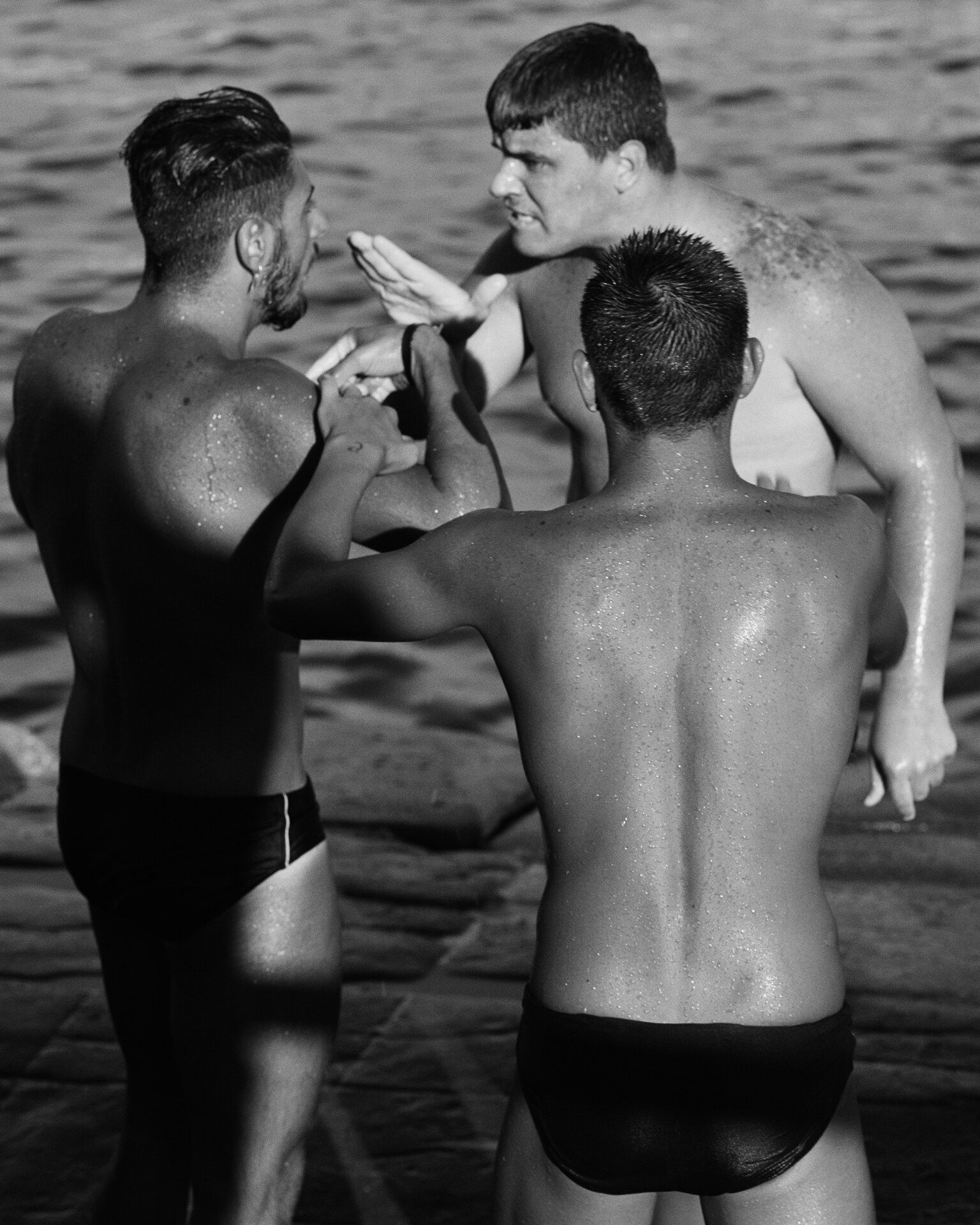
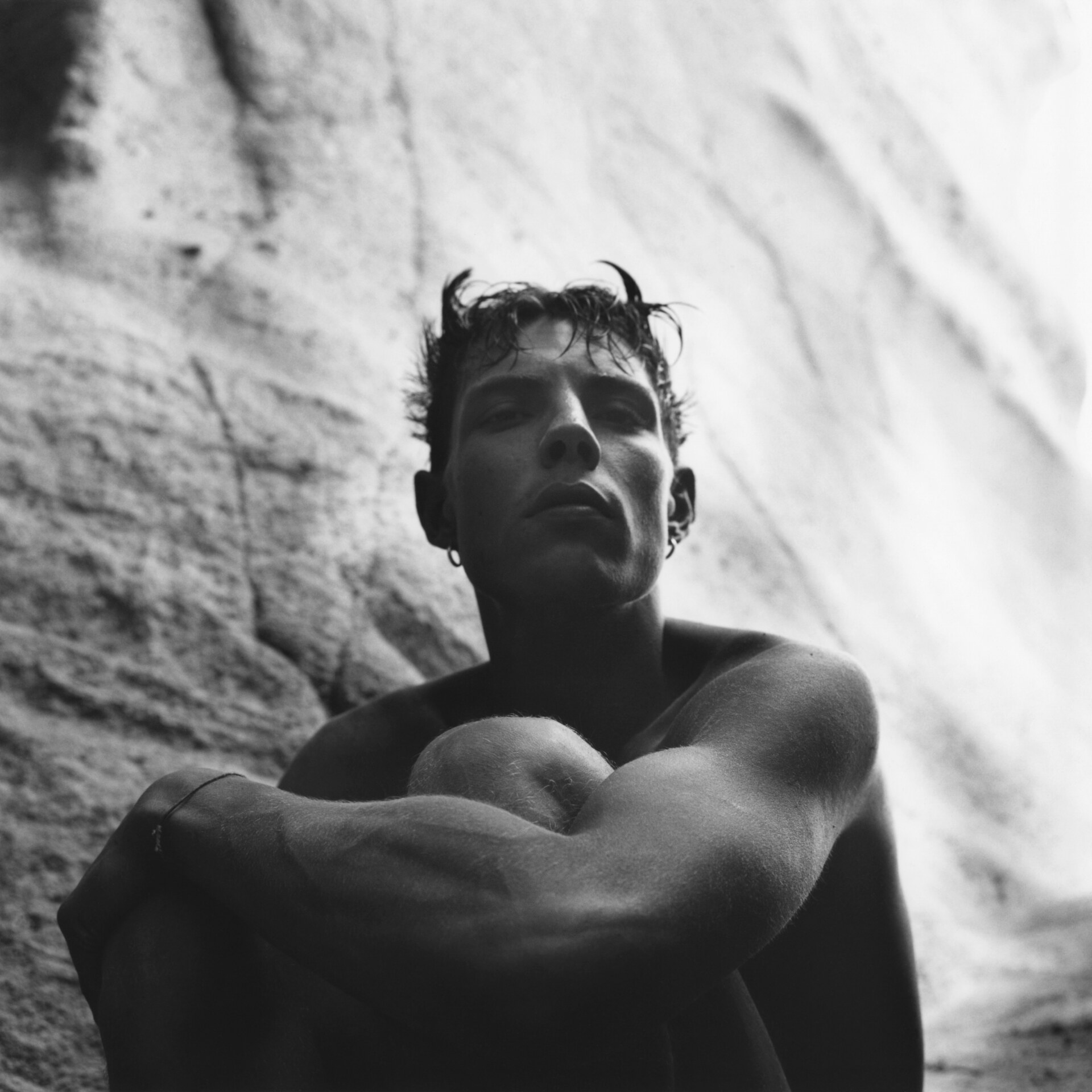
Claudio with salt-stiffened hair curled up like devil’s horns
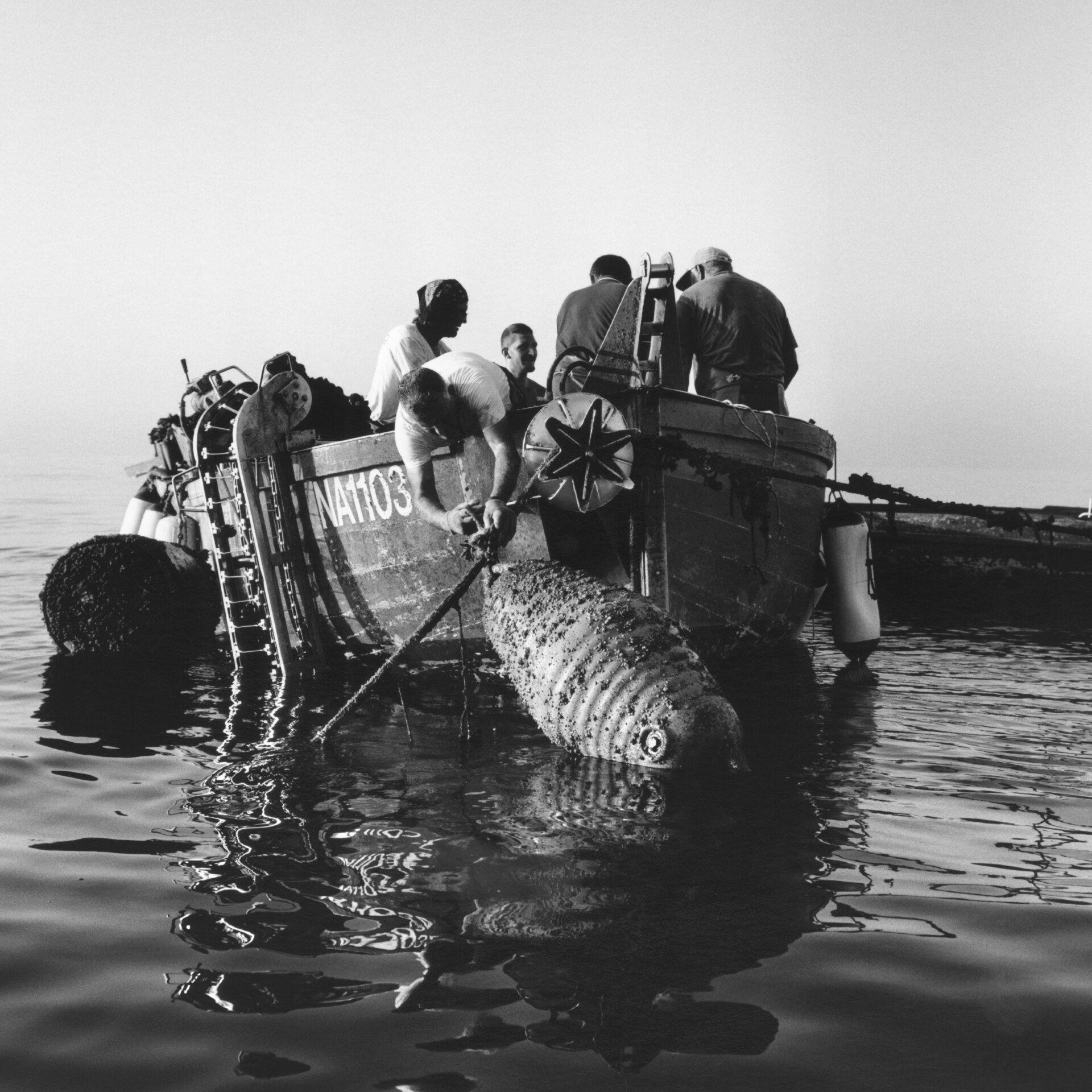


Pasquale's painted face
If, as it often feels, all the world’s spirit and vitality is concentrated into this one city, then why would Lloyd choose to shoot his images solely in black and white? “I wanted to see if the colour and vibrance of Naples still came through in black and white images. I think it does, maybe even more profoundly in the absence of colour,” Lloyd says. The Bay of Naples preserves some of the world’s most intriguing archaeological sites, and Palazzo degli Spiriti, Lloyd’s favourite among them, appears in several images throughout the book. It makes a mesmerising silhouette in monochrome, both on its own and as a backdrop for portraits of salty-skinned Neapolitan adolescents who look like sculpted demi-gods born from its arches. This former “pleasure palace” built by Emperor Augustus in the 1st century BCE is accessible only by swimming, and Lloyd captures the dilapidated site’s mystical aura, along with visual evidence that it’s the perfect spot from which the daring ones can dive into the sea on a blistering afternoon. The sacred site has besotted the likes of Bryon, Goethe and Stendhal during their visits, and kids really shouldn’t be jumping off it and smashing it up, but this is Napoli…who’s going to tell them not to?
Lloyd’s intense fascination with Naples recalls the words of my Neapolitan friend, who said to me on my first night in the city: “Napoli è na malatia” (“Naples is like an addiction”). You visit once, and pretty soon you have been visiting for 12 years, 20 years, or for the rest of your life. Yes, the city has its harsh realities, but Lloyd is glad to offer a different perspective focussed on beauty, on passion–a view that exists in the purity of the moment. For someone who doesn’t have Neapolitan blood, it’s not about seeking to “understand” the city, as this may never be possible. Rather, it’s about embracing Naples for all it is, participating in its beauty, and opening oneself up to the physical and emotional experience of a place that reminds one of life’s gifts. As Lloyd writes:
“For those of us who come from other places, embracing Naples in all its dimensions is a lifelong obsession, but it is one that makes life all the more richer. There is no other place that comes close in its raw power to move and rejuvenate the spirit. Not only is it beautiful, it asks you to be part of its beauty. The sights along its coast convey an expanded sense of life, rhythms that span childhood, adolescence, adulthood and old age. We become aware of this process unfolding, but never-ending, over a day spent in Naples.”
